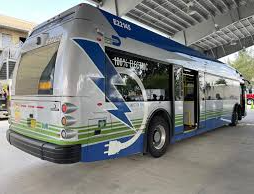A closer look at the growing and rapidly evolving electric vehicle market
The emergence of any groundbreaking technology often comes with a whirlwind of excitement and uncertainty. Think of the early days of aviation in the 1960s, personal computers in the 1980s, or the rise of iPhone apps in the 2000s. The narrative is always familiar: a surge of new products, a frantic race to attract customers driven by fear of missing out, and a flood of investment into the latest trend.
The electric car market in the US is currently experiencing this very phenomenon, and that’s where Bloomberg Green’s Electric Car Ratings step in.
To bring clarity to this bustling market, we’ve compiled a comprehensive rating system for all the electric vehicles (EVs) currently available in the US. This dashboard offers real-time insights on every fully battery-powered vehicle on the market, measuring key metrics like price, range, charging speed, and seating capacity.
While electric cars are significantly cleaner than traditional petrol-powered vehicles—especially as renewable energy becomes more integrated into the grid—the carbon footprint of manufacturing still needs to be considered. Despite their “zero-emission” label, the process of making these cars involves significant environmental impact, from the steel used in the body panels to the lithium mined for the batteries. Even electricity sourced from solar panels requires a considerable amount of capital and energy to produce.
This is why our ratings also account for the environmental impact of each vehicle, using a formula based on its economy, weight, range, and battery size. The majority of the score (70%) reflects the car’s efficiency in terms of emissions produced while driving, while the remaining 30% reflects the impact of manufacturing, particularly the battery construction.
Our dashboard will be regularly updated as new models emerge and metrics evolve. Currently, the Lucid Air Dream Edition Range sits at the top of the list, boasting a range of up to 520 miles (836 km), thanks to its sleek design and efficient electric motors. At the other end of the spectrum is the GMC Hummer EV, which prioritises off-road performance over economy, with its massive battery and robust chassis.
The US now boasts around 33 electric vehicles for sale, nearly triple the options available just a year ago. By this time next year, even more models—including highly anticipated electric trucks—will join the market. The electric vehicle revolution is in full swing, and the industry is growing even faster in Asia and Europe, where nearly 10% of new vehicles sold are fully electric.
For carmakers, the shift to electric vehicles is crucial for survival. For consumers, however, navigating this explosion of choices is overwhelming. Companies are not only unveiling new models but also investing heavily in promoting future electric cars that won’t even be available for years. For example, General Motors showcased its Chevrolet Silverado EV in January, but customers won’t receive their trucks until the following spring.
The surge in demand for electric vehicles is evident: one in four Americans recently expressed a strong interest in purchasing an EV for their next car, even before the recent spike in fuel prices caused by the war in Ukraine. As a result, waitlists for popular models like the Hyundai Ioniq 5 are growing, and price mark-ups have become common. Ford has even paused orders for its F-150 Lightning and Mustang Mach-E to manage the overwhelming demand.
Electric cars have evolved significantly since the Nissan Leaf debuted in 2010. Once seen as quirky and impractical, they have now become powerful and sleek vehicles that rival their combustion-engine counterparts. This shift marks a crucial moment in the climate crisis, as convincing consumers to make the transition to EVs is key. However, the next challenge may be persuading buyers to limit their purchases to only as many electric vehicles as are truly necessary.
The electric vehicle market is in the midst of an unprecedented shift, and the chaos may never be this intense again. Whether you’re in the market for a new EV, investing in the sector, or simply curious about the future of transportation, we’ll continue to track the developments and keep you informed. Stay tuned for updates on the latest innovations and which electric car leads the pack.








